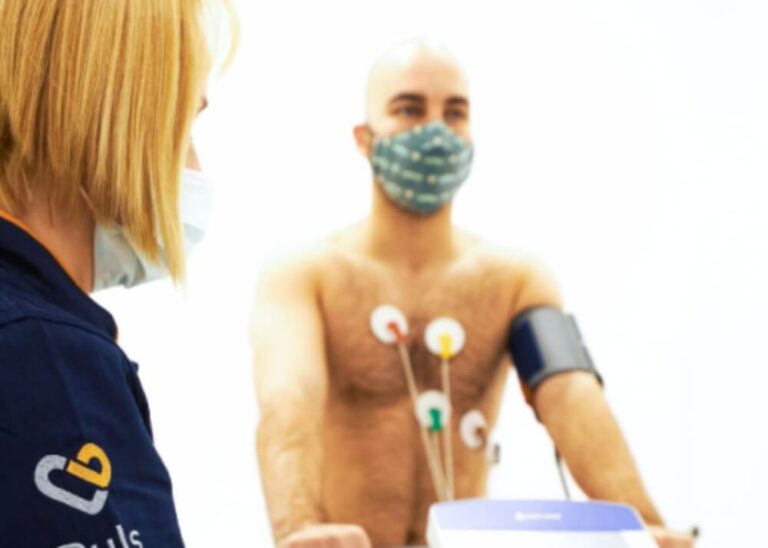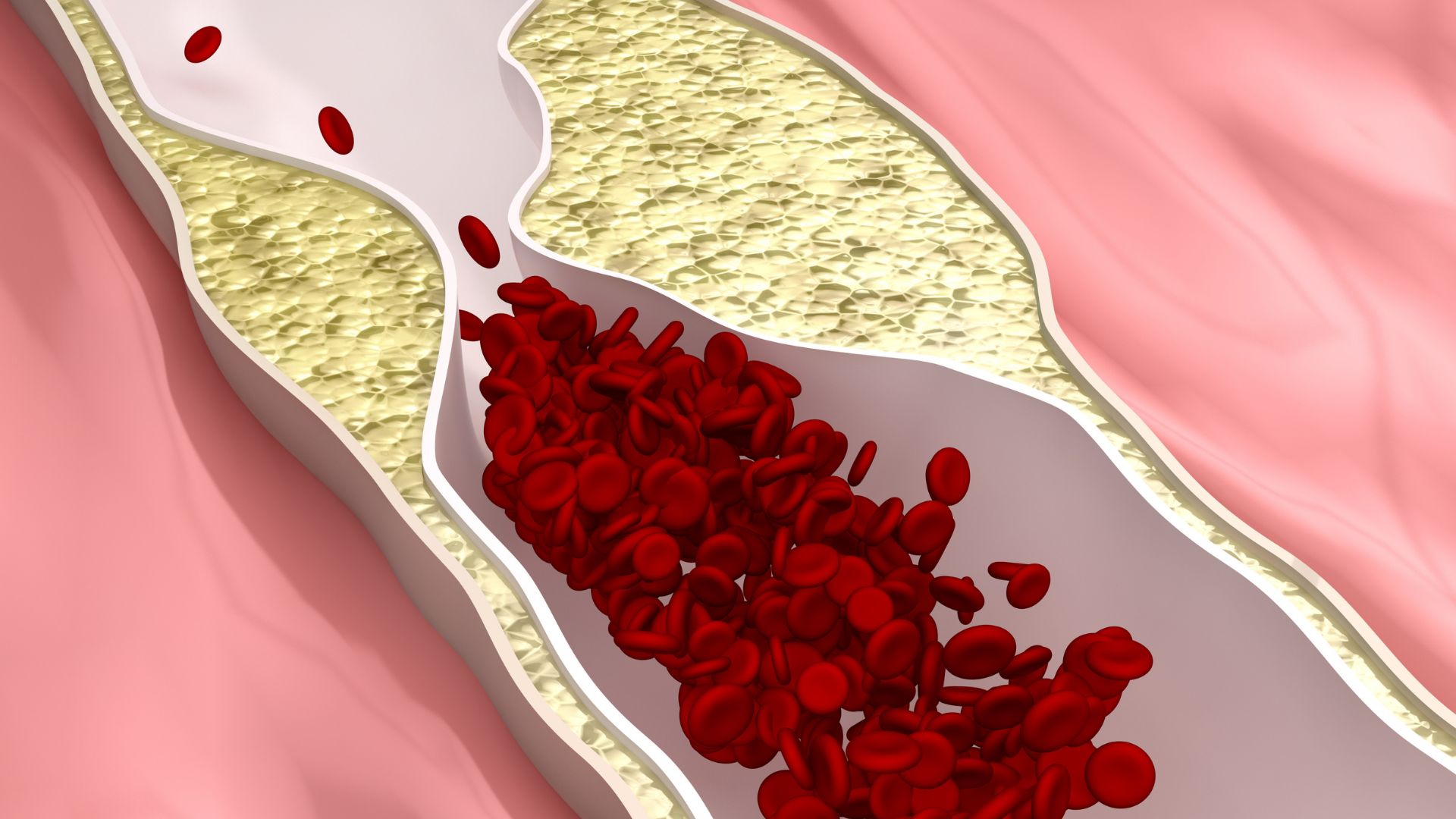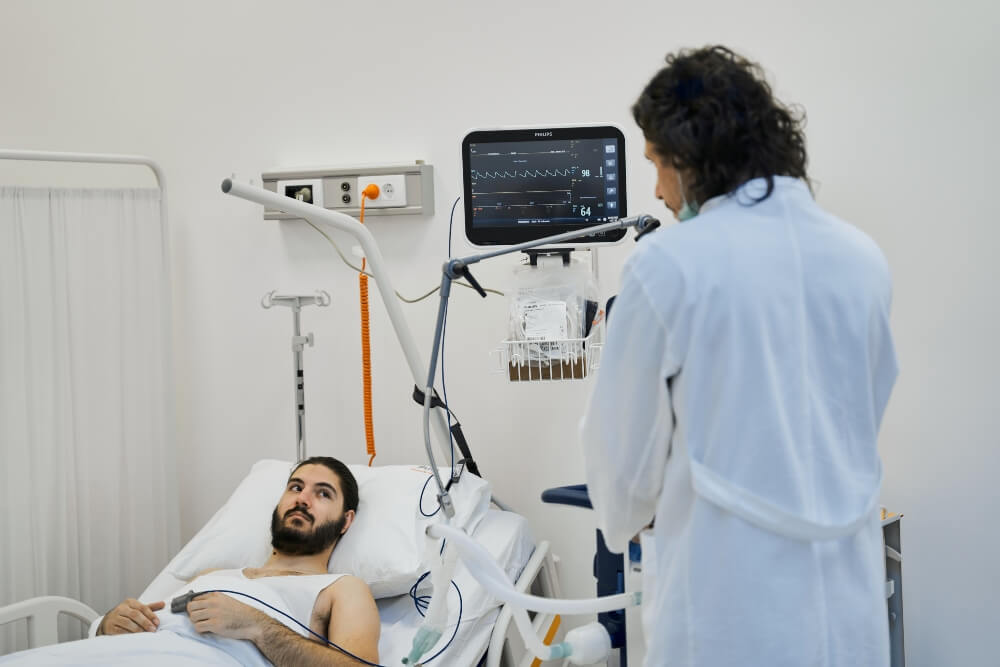Of course, chest pain doesn’t always signify a dangerous disease, but we shouldn’t make that assessment ourselves. The intensity of the pain also doesn’t have to be in accordance with the seriousness of the situation, for the simple reason that everything will depend on the localization of the problem. If the pain is located on the surface it will be more intense and sensitive to movements, inhalations and if the pain arises in the heart, it can be transferred to the arms, shoulders and its intensity may vary.
Angina pectoris requires treatment and a visit to a cardiac institution is necessary.
What Is Angina Pectoris?
Angina pectoris is a condition characterized by a reduced supply of oxygen to the heart muscle. Decreased oxygen supply may be due to constriction of the coronary arteries, but it can also happen that the heart muscle has an increased need for oxygen, which is the case when the patient has hyperthyroidism or severe anemia.
What Types of Angina Pectoris Are There?
There are several types of this condition:
- Chronic stable angina pectoris – problems in the form of chest pain are noticed only when a person is in a state of great stress, sadness, or while exposed to great effort.
- Unstable angina pectoris – implies the appearance of chest pain not only in moments of effort but also at rest; in addition, it can last longer than 20 minutes. Unstable angina pectoris requires a mandatory visit to a cardiologist, as well as treatment and sometimes hospitalization.
- Prinzmetal’s angina pectoris (vasospastic angina pectoris) – this is a rarer form of angina and is caused by a reduced flow of oxygen to the heart muscle. The pain can occur both at rest and during sleep, and it usually manifests suddenly and repeats for days at about the same time. In some patients, the pain will be atypical, so it may be weaker and localized differently. This can be influenced by the patient’s age and associated diseases.
- Painless angina pectoris – the symptoms of angina pectoris in this case are absent, but the problem still exists, and the flow of oxygen to the heart muscle is reduced.
How to Recognize Angina Pectoris?

If your problem is caused by angina pectoris, this symptoms will help you to detect it.
The symptoms of angina pectoris:
- Squeezing, tingling, pressing in the chest
- Retrosternal pain
- Pain can occur both at rest and on exertion
- The duration of the pain is 10 minutes or more without stopping
- The pain can spread to the neck, shoulders, arms, back, but not below the navel
- In addition to the pain, sweating, vomiting and loss of consciousness may occur
These symptoms of angina pectoris are a sign to go to a cardiologist as soon as possible. At our cardiology center, top experts in the field of cardiology who are ready to help immediately are always available to you.
Risk Groups for the Development of Coronary Heart Disease
If you can identify yourself in the following categories, you belong to the risk groups for the development of coronary heart disease, so pay attention to whether you have symptoms of angina pectoris.
There is an increased risk in people who are:
- obese
- smokers
or
- have high blood sugar, diabetes
- have high blood pressure
- have a positive family history for this disease
How Is Angina Pectoris Diagnosed?
In order to keep angina pectoris under control, the diagnosis must be made in time.
At the Pulse Cardiology Center, we use the Quick Chest Pain Bar, which is a series of well-designed steps that lead to a quick diagnosis and decision on how to treat the problem, and includes:
- Emergency admission
- Complete diagnostics and examinations
- Observation of the condition
- Intervention (if it is necessary)
When you contact us due to the chest pain and the possibility that your problem is angina pectoris, the diagnosis will be made on the same day. Our steps will depend on the condition in which you are, when you contact us.
If the patient is stable, a stress test (ERGO test) or an ultrasound-loaded heart test (SEHO test) may be recommended. If the results of the first test are positive, standard selective coronary angiography or MSCT coronary angiography will be performed further. A patient who has a life-threatening constriction of blood vessels will be kept in the hospital.
Treatment of Angina Pectoris
Very serious disorders of the inflow of the oxygen to the heart require urgent interventions such as:
- PCI (percutaneous coronary intervention) procedure with implantation of a stent or stents – a stent is a metal spring that is implanted in the coronary artery and stays there forever. It reduces constriction and allows blood to flow through the blood vessel. It is one of the most common interventions in cardiology and is performed in special rooms.
- Bypass – involves surgery that allows better blood flow to the heart. The surgeon uses the patient’s vein or artery and sutures it as an additional blood vessel that supplies blood to the coronary artery where there is no constriction. When it is impossible to install a stent, this option is used.
Sometimes the use of medications will reduce the need for intervention, and if any of them occur, then medications will also be necessary. The use of medications is very important for controlling angina pectoris.
Therapy may include some of the following types of medications:
- anti-ischemic drugs – can reduce myocardial oxygen consumption. This type includes beta blockers, nitrates, and calcium antagonists.
- antiplatelet drugs – they permanently or reversibly regulate platelet function.
- anticoagulant drugs
When angina pectoris occurs, the diagnosis in the shortest possible time is a priority, and then the decision of the interventions and treatment.
It is of vital importance for the patient to adhere to the prescribed therapy and to regularly monitor his condition. Inadequate treatment of this disease leads to complete blockage of blood vessels and myocardial infarction. In such a situation, the usual therapy will not eliminate the pain, which will become stronger and longer, and then it is necessary to call an ambulance immediately. The outcome will depend on the speed of the reaction.

Prevention of Angina Pectoris
Now that you know what angina pectoris is and what angina pectoris treatment entails, we hope you understand the importance of preventing it.
Maintaining optimal body weight, quitting smoking and alcohol are mandatory. Quality, moderate and regular diet, as well as physical activity in accordance with the age and abilities of a person are very important factors for preventing the occurrence of any disease, including heart disease.
If you belong to the risk group for the development of a coronary heart disease, focus on the reasons why you are in such a position. If it’s because of bad habits, eradicate them; if the reason is another disease, take therapy regularly and go to check-ups; and if there is a person with a coronary heart disease in your family, in addition to healthy habits, introduce annual systematic examinations.
Health should always come first, and at the Pulse Cardiology Center, we place special emphasis on the importance of a healthy heart. We are focused on each patient individually and equipped so that we can respond to all your requests.
Our medical staff is always available for consultations, examinations, interventions. In addition, we are happy to point out that our patients have the opportunity to use educational materials and special e-health services. In this way, we monitor the condition of our patients with the help of a special application. Your impressions and suggestions are very important to us, because our goal is to create a system tailored to each of you.
Make an appointment at Pulse Cardiology Center and do a great thing for your heart, because it does great things for you every day.





